
In today's fast-paced world, customer support has never been more critical. An outstanding support experience can be the key to winning your customers' loyalty and trust. Did you know that 55% of customers say that easy access to information and support can make them fall in love with a brand?
A powerful way to provide users with the information they need is by implementing help authoring software to create an intuitive and efficient customer self-service portal. This move can significantly benefit both your users and your business, as it enables:
- Immediate, round-the-clock assistance for your customers
- A consistent, top-notch support experience
- Cost savings on customer service due to a reduction in support tickets, messages, and calls
In fact, a Harvard Business Review report found that 81% of customers prefer to solve their issues on their own before reaching out using live chat or calling in.
It’s no easy task to build, maintain, and improve a self-service portal that helps customers navigate to the right information level for their needs and solve their issues. This is why it's important that you choose the right help authoring tool (HAT).
But, before we get into which help authoring tool you should consider for your business, let's dig a bit deeper.
In this post, we'll discuss:
- What a help authoring tool is
- Why you should consider using help authoring tools
- The best help authoring solutions
- Some simple tips to get you started with creating useful help documents
What Is Help Authoring Software?
Help Authoring Software, or Help Authoring Tool (HAT), is a specialized content development application designed to create, manage, and distribute support documentation such as instruction manuals, help documents, and user guides. The content created with this type of software often appears as a FAQ section or support document section on a company's website, providing users with immediate answers to their questions.
Help authoring tools cover a broad spectrum, from basic versions with essential features to advanced component content management systems (CCMS) that manage information at a granular level. Most businesses will benefit from a solution that falls somewhere in between these two extremes.
Some of the basic features you can expect from any help authoring tool include:
- Single-source authoring: adding a source text that can be compiled into different formats
- Import and export help documentation
- Editing text, code, or data
- Managing indexes, tables of contents, or images
- Adding multiple authors to collaborate on the same text
- Customizing the interface, so it fits your brand
A few tools offer more advanced features, such as customization, increased security functions, and analytics tools. Many tools offer a “What You See Is What You Get”-view (WYSIWYG), which makes it easy to see the impact of any changes. Others are more powerful XML based authoring tools that require more tech experience from the user but can fit more demanding processes.
Why Use Help Authoring Software?
There are multiple benefits to using help authoring tools such as:
- Time and cost savings: HATs allows technical writers to create and update content more efficiently, saving time and reducing the costs associated with documentation development.
- Improved consistency and branding: Many help authoring tools provide templates and style guides to ensure that documentation is consistent in format, appearance, and tone, which is important for maintaining a professional image and strong branding.
- Single-sourcing: Help authoring tools often supports single-sourcing, which means you can create content once and then reuse it in multiple formats (e.g., PDF, HTML, and online help systems) without having to reformat or rewrite the content. This reduces redundancy and increases efficiency.
- Enables collaboration: Help authoring software typically includes features that facilitate collaboration among team members, such as version control, comments, and real-time editing. This helps to keep everyone on the same page and ensures that the final documentation is accurate and cohesive.
- Easy documentation maintenance: With a help authoring tool, updating and maintaining documentation becomes a less cumbersome process. Writers can make changes to a single source file, and those updates will automatically propagate to all formats, ensuring that the most up-to-date information is always available to users.
- Improved efficiency: Good help authoring software will include features to help create comprehensive indexes and search functionality, making it easier for users to find the information they need quickly and efficiently.
- Localization: HATs often includes support for multiple languages, making it easier to translate and localize content for global audiences.
- Accessibility compliance: Help authoring tools can assist in creating content that meets accessibility standards and guidelines, ensuring that documentation is accessible to users with disabilities.
12 Best Help Authoring Software Solutions
By now, you’re probably wondering what the best help authoring tools are. So, let’s go through some of the top options including:
- Helpjuice
- Adobe RoboHelp
- Madcap Flare
- HelpNDoc
- Paligo
- HelpSmith
- Dr.Explain
- ClickHelp
- Help+Manual
- Confluence
- Author-it
- Heroic Inbox
1. Helpjuice
Best for: Okay, let’s be straight here — Helpjuice is different from many other tools on this list because it is so much more than just a help authoring tool. It's a knowledge base that enables you to centralize, streamline, and enhance your company's various assets, such as:
- Standard operating procedures
- Training materials
- Product manuals
- FAQs
- How-to Guides
- Troubleshooting guides
- ... and so much more
Not only can you create documentation, but you can also set up a searchable, fully customized self-service support portal in no time. This ensures that you, and by extension, your customers, are well-equipped with finding and being able to access the information they need.
But that’s only scratching the surface of the possibilities.
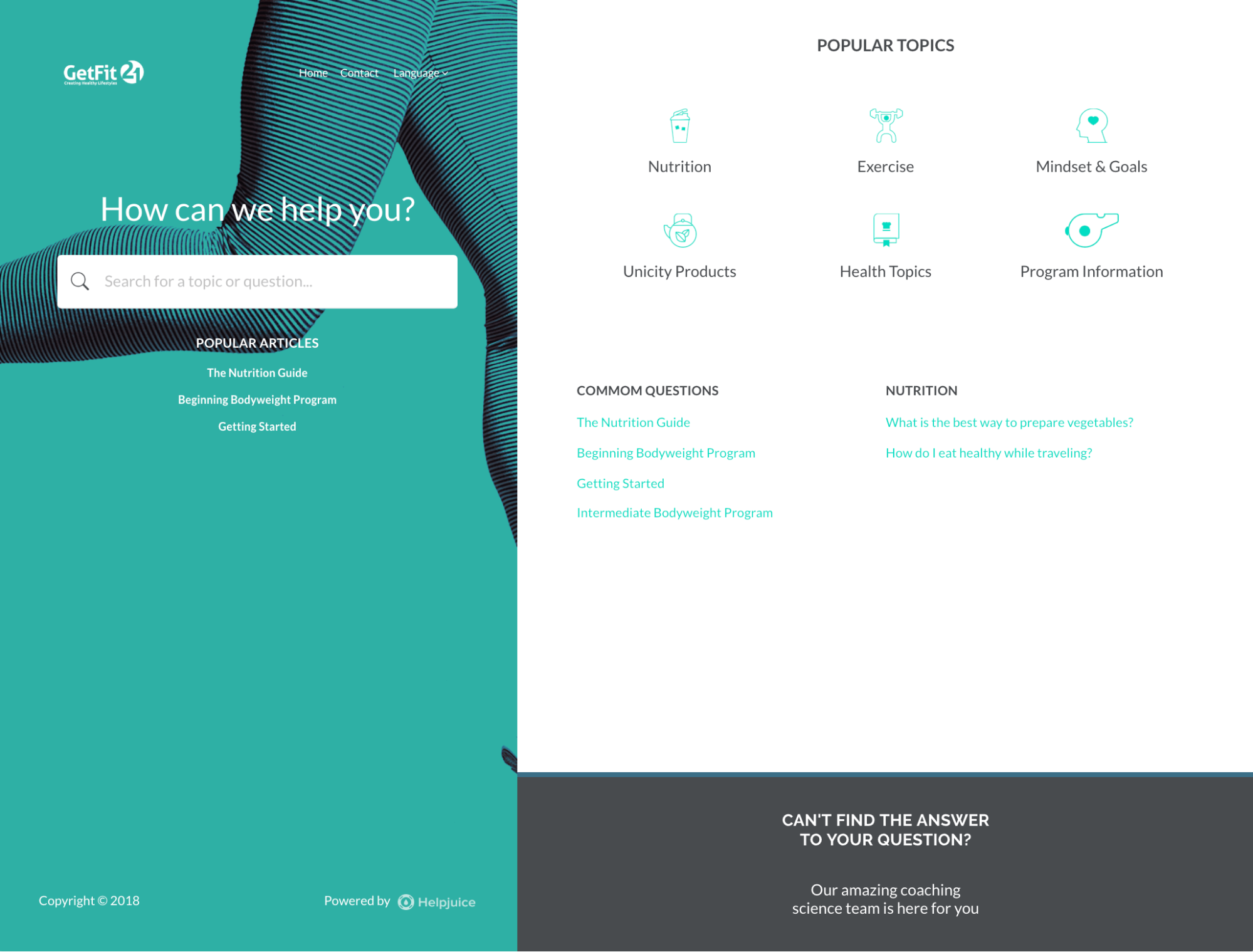
Helpjuice enables users to easily and quickly create a knowledge base that can be used to collect, organize, find, and share any company knowledge. Onboarding new employees? Sharing the latest sales figures to a select group of employees? Sending the latest policy changes to everybody? No problem — Helpjuice means you can control exactly who gets access to what information.
All this makes Helpjuice perfect for companies who want one strong Swiss army knife to form the foundation of their knowledge management strategy, instead of having to pay for, learn, and try to integrate several different software programs.
Highlights:
- Google-like search help customers find the right answer, quickly
- Interactive questions guide customers to a tailored solution — for example, based on the product model or software version.
- Advanced analytics help you identify your customers’ favorite topics
- Customize the tool to fit your needs exactly (Helpjuice’s support team is happy to do it for you)
- Integration with tools such as Zendesk lets you pull answers from your knowledge base straight into your support tickets
Want more options? Read this guide that dives into the top knowledge base tools you can consider.
2. Adobe RoboHelp
Best for: RoboHelp’s template features makes it especially useful for teams who are looking to create responsive websites for their help documentation. For example, the auto-generated code lets you easily publish a responsive mobile app to help guide your customers to the right solution. You can expect a large number of customization options and features, which gives this tool a bit of a learning curve.

(Source)
The interface is minimalistic and allows you to switch views between author, code, and preview. Handy features include autocompleting search suggestions, which makes it easier for your users to find the right answer.
Highlights:
- Live CSS view so you can see your changes as you’re doing them
- Import and use scalable vectors in your graphics
- Global style management control for a coherent look
- Single-click mobile app generation
- Project management tool for a convenient help content overview
3. Madcap Flare
Best for: MadCap Flare is a versatile help authoring tool suitable for teams that require advanced features, such as single-source publishing, content management, and conditional tagging. It is ideal for creating user documentation, instruction manuals, and online help systems in various formats. Flare's comprehensive functionality may come with a learning curve but offers a highly customizable and flexible authoring environment.
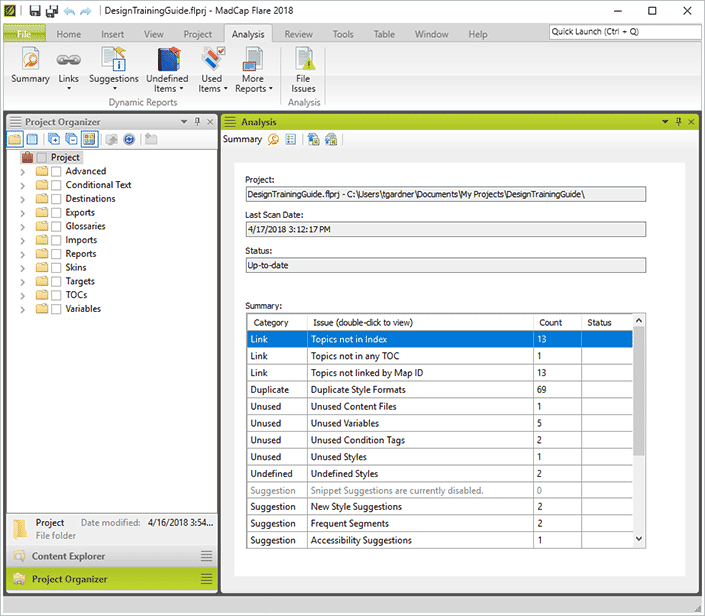
(Source)
The user interface is intuitive, and you can switch between different views, such as content editing, XML source, and preview. MadCap Flare also has built-in project management capabilities, making it easier to organize and manage your documentation projects.
Highlights:
- Topic-based authoring for modular and reusable content
- Single-source publishing for multiple output formats (HTML5, PDF, EPUB, etc.)
- Conditional tagging for tailored content delivery
- Integration with MadCap Central for cloud-based collaboration and project management
- Content import from various sources, including Microsoft Word, HTML, and DITA
4. HelpNDoc
Best for: HelpNDocs may not be as advanced as tools such as Adobe RoboHelp or Madcap Flare, but its simple, Windows-like interface makes it approachable even for less tech-savvy users. It features a WYSIWYG-editor, which immediately lets you see your changes.
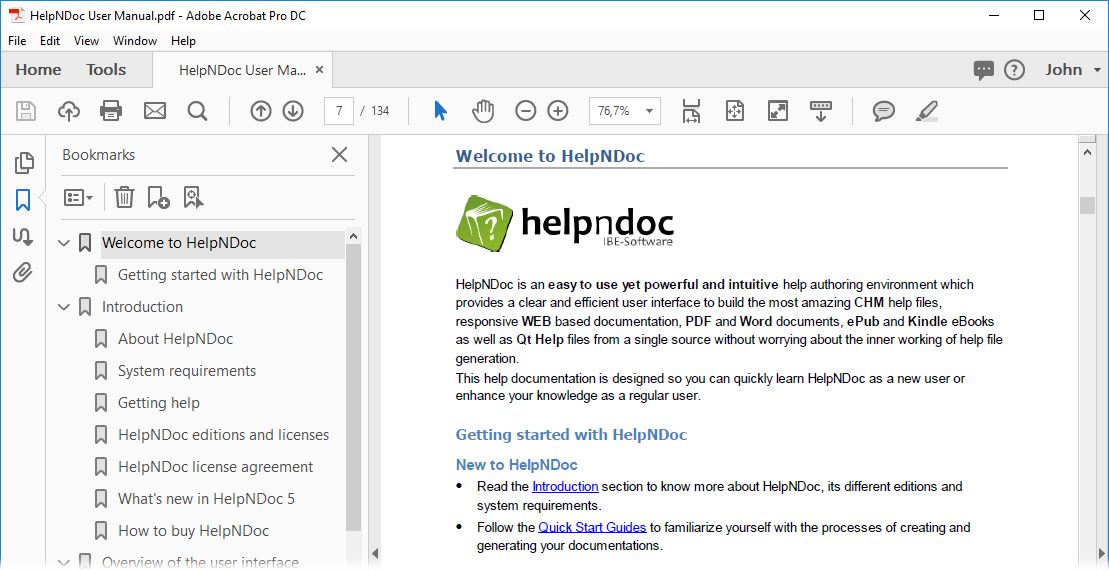
(Source)
A library of templates speeds up content creation. Once you’re done, HelpNDoc includes an easy feature for exporting content into various formats, such as PDF, EPUB, CHM, or HTML.
Highlights:
- Project-wide media libraries
- Advanced table of contents editor
- Automation of repetitive tasks with the script editor
- HTML5-based websites or online help documents
- Automatic check for broken or misspelled links in the documentation
5. Paligo
Best for: The cloud-based Paligo brands itself as a heavy RoboHelp and Madcap competitor. It is a full Component Content Management System (CCMS) that uses XML. Paligo is especially useful for technical writers who need a way to manage complex technical documentation. Despite the advanced features, you can still count on a clear, appealing overview with the clean interface:
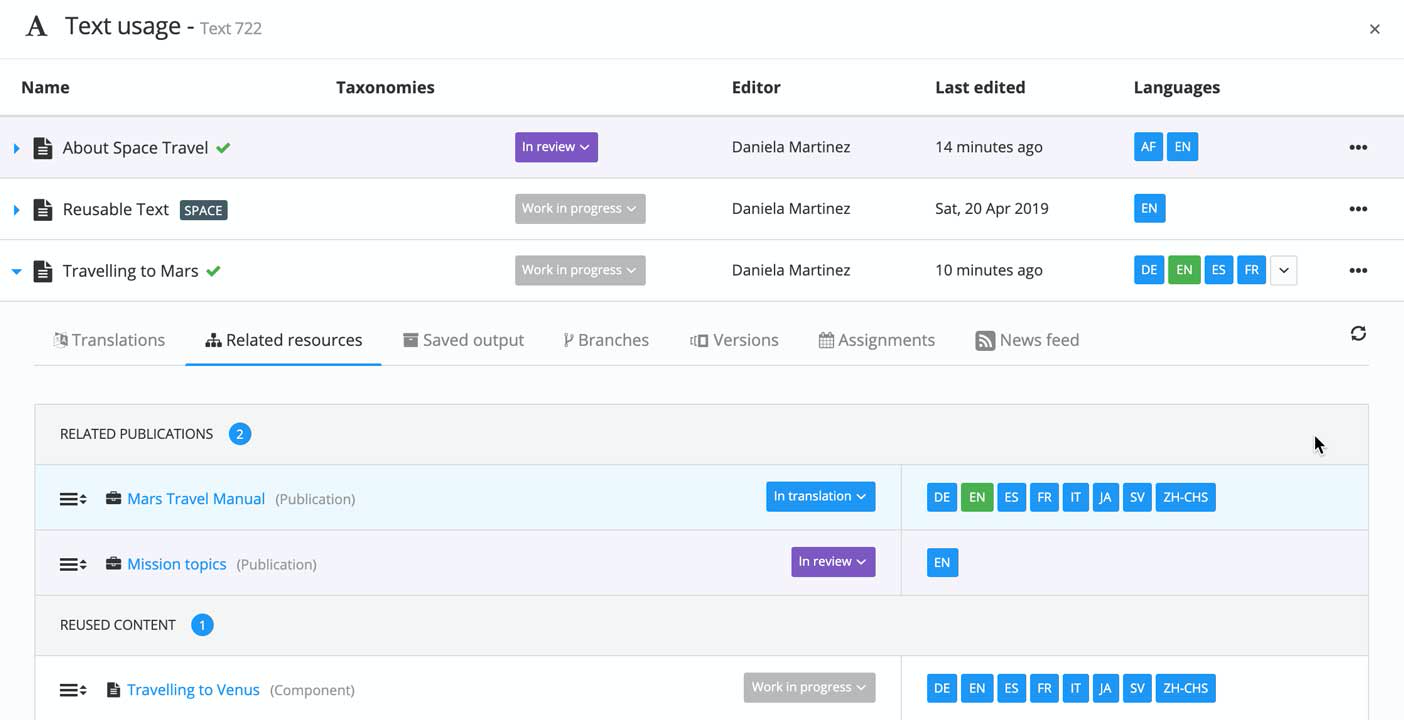
(Source)
Paligo doesn’t just generate content in channels such as HTML and PDF but also integrates with widespread support and sales tools such as Zendesk, Freshdesk, and Salesforce.
Highlights:
- XML- and topic-based authoring
- Authoring, versioning, and content management functions
- Topic-based reuse of content
- Workflow tools for reviewing drafts, translations, and comments
- Single-sourcing of content into Salesforce
6. HelpSmith
Best for: HelpSmith is excellent for those who want an easy-to-use tool that produces simple help web pages and documents. Customizable web layouts and document templates ensure that you don’t need to be overly tech-savvy to produce help documentation. If you are looking for an advanced technical writing tool, this probably isn’t the right fit for you.
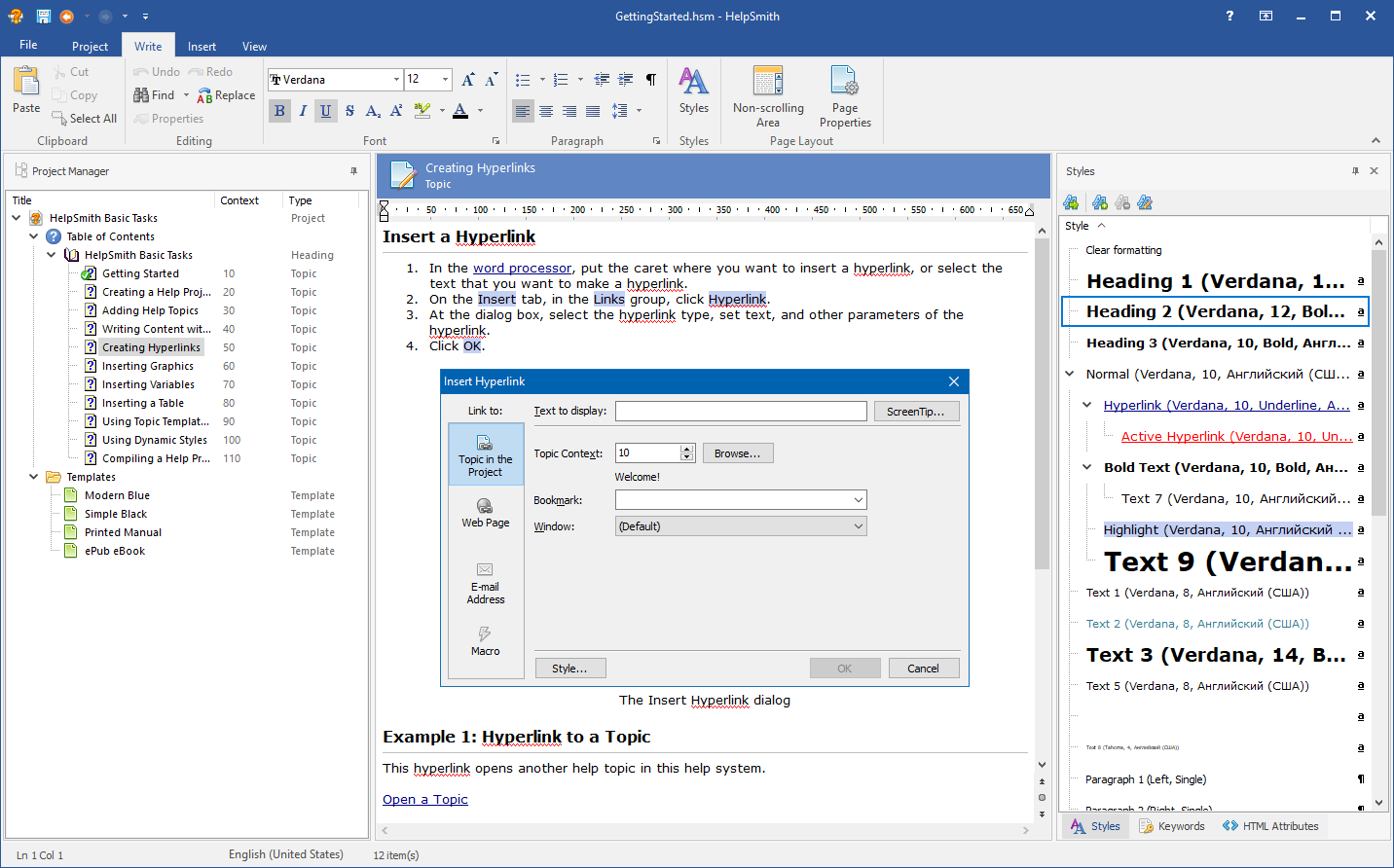
(Source)
The single media repository for media, such as images and videos, makes it easy to use files in several different projects. You can also merge projects for working on translations or bringing in technical writers.
Highlights:
- Single-source authoring to CHM, PDF, EPUB, and DOC
- Built-in processor with spell-checker and multi-language support
- Import content from file types such as RTF, HTML, and CHM help files
- Screenshot tool for easy tutorial images
- Build tag feature for conditional document compilation
7. Dr.Explain
Best for: Dr.Explain is useful for software development companies that need an affordable solution, whether freelancers, studios, or larger companies. For those who need to explain and create help documentation for their software, Dr.Explain could be a good fit.
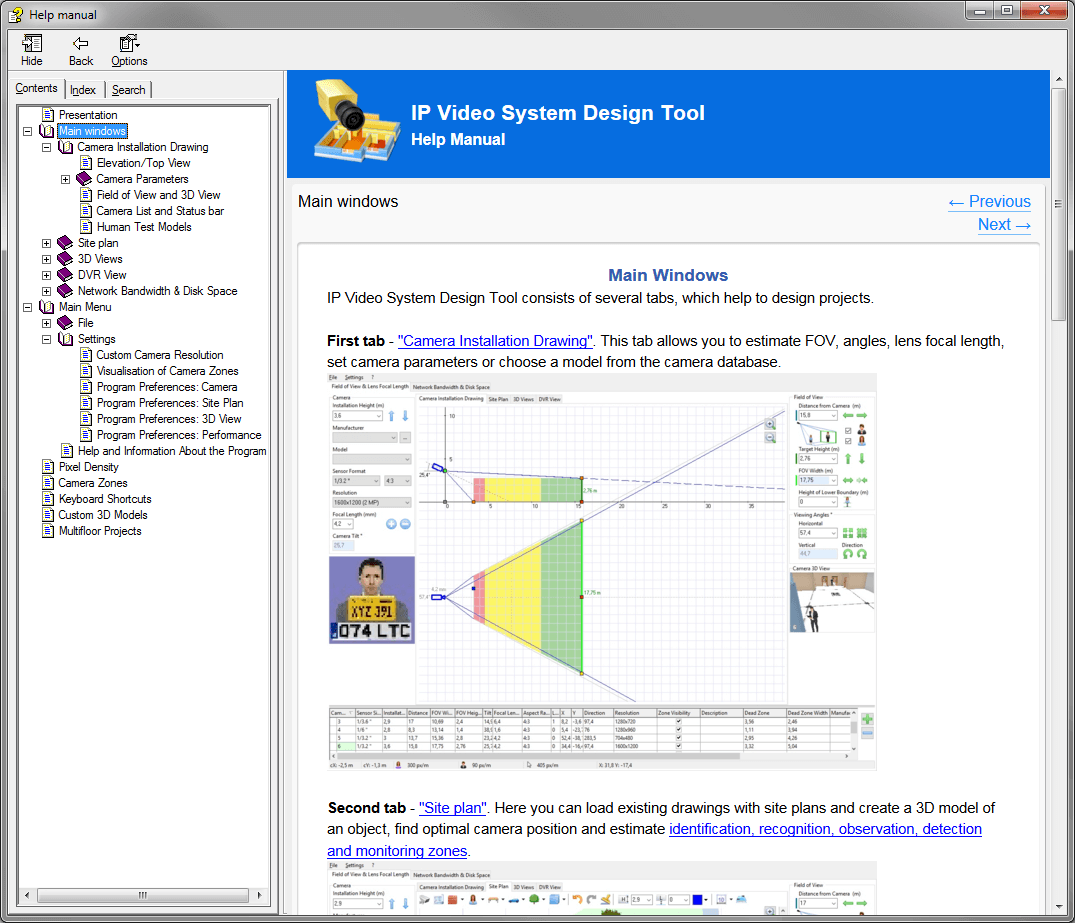
(Source)
Do you have a multinational team or customer base? Then this help authoring software might be of interest. Dr.Explain’s multilingual interface comes in nine different languages. It also supports various font faces, including Unicode, which makes it possible to create help documentation in, for example, Arabic or Chinese languages.
Highlights:
- Keyboard shortcuts for exporting to formats such as HTML, CHM, RTF, and PDF
- Advanced screen capture for capturing and annotating web pages
- Edit and publish to the cloud platform Tiwri.com with two clicks
- Gather help files from any programming language, including C, C++, Visual Basic, and more
- Automatic topic drafts based on your software interface
8. ClickHelp
Best for: ClickHelp is for teams who need a robust help authoring software but want to skip the complexities. This cloud-hosted solution boasts support for rich topic content, such as quizzes, videos, and survey forms. Apart from single-source authoring, you can also reuse content across different projects.

(Source)
One handy feature is the conditional content ability to tag content for different users, meaning that you can save the more advanced help content for developers. ClickHelp customers can expect to export their help documents as a web portal or into a wealth of file types, such as CHM, PDF, RTF, or EPUB.
Highlights:
- WYSIWYG-view that shows you the impact of the changes you make
- Helpful navigation elements such as breadcrumbs, “See also”-links and mini-table of contents
- Minimalistic workflow system for reviewing content
- Automatic document locking prevents you from losing changes when collaborating as a team
- SEO-functionality that helps your support content rank in search engines
9. Help+Manual
Best for: Help+Manual is not the most powerful tool in this list, but it is convenient for light or occasional users. It even offers a “floating license”, which means that you can share a license among occasional contributors. The tool also features convenient tools for external content creation and content review.
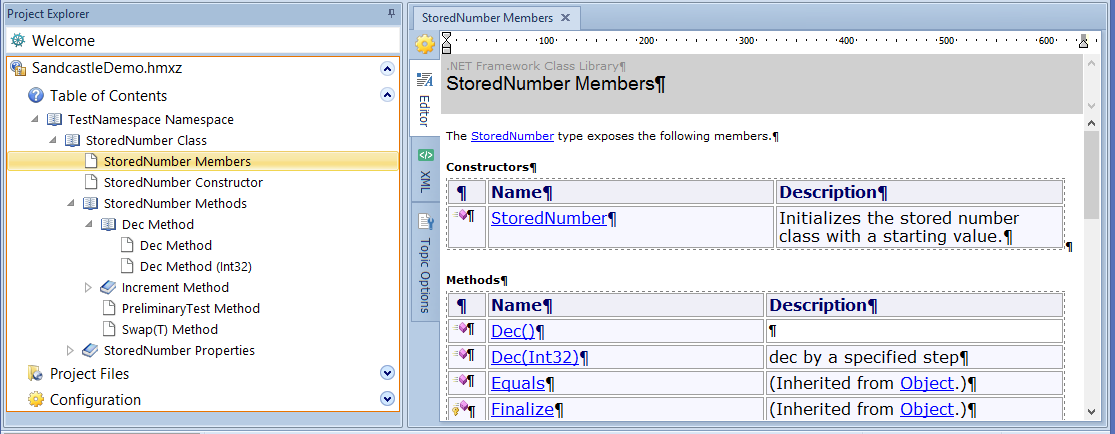
(Source)
The version control system makes it possible to work offline or edit remotely. The system checks out the topics as they are added and then adds them back in and compares them with the previous version when you finish editing.
Highlights:
- WYSIWYG-editor and interface similar to Microsoft Office
- Translation tools connected to ICanLocalize translation services
- Version control system makes it possible to work offline
- Templates and skins create a coherent look
- Tools for screen-capturing, QR-code generation, and graphics editing
10. Confluence
Best for: Confluence is built for sharing your public and internal technical documentation. It is part of Atlassian’s suite and integrates well with Atlassian’s tools, such as Jira and Trello. You also have the option of purchasing third-party apps and custom themes for extra features. Confluence is particularly attractive for teams who want a solution that integrates well with other tools.
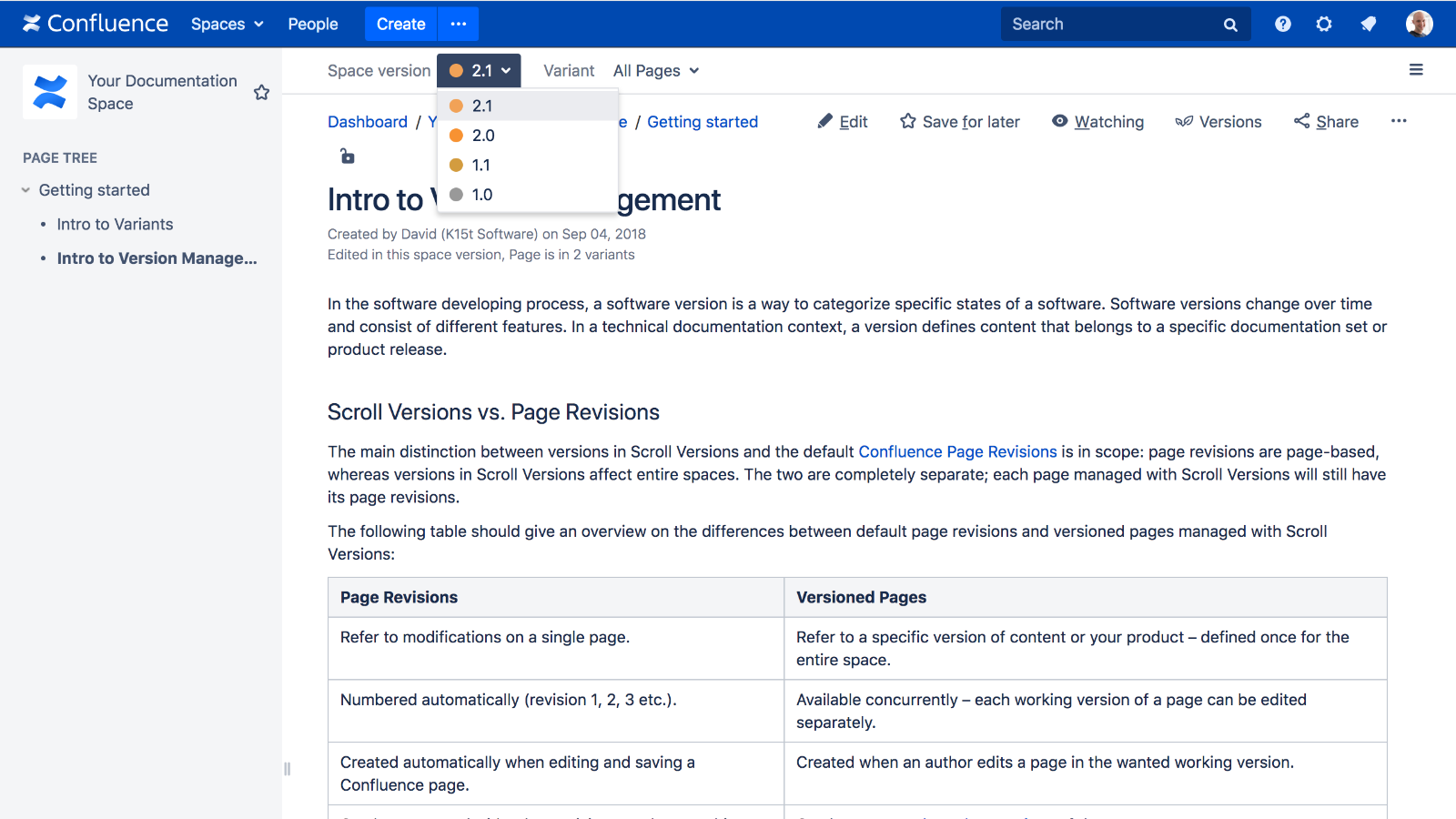
(Source)
Depending on your needs, you can choose to host the software yourself or go for a cloud-based solution. While Confluence is a reliable option, it may be too advanced for smaller teams looking for a simple help authoring tool.
Highlights:
- Real-time collaboration with @-mentions and in-line comments
- Customizable, clean-looking templates
- Import and export into formats such as Word, PDF, and HTML
- Advanced security features, data encryption, and privacy compliance features
- Users get a personal workspace that they can organize as they wish
11. Author-it

(Source)
Best for: Author-it is a powerful component content management system (CCMS) with help authoring capabilities. It is ideal for organizations with large-scale documentation projects that require content reuse, version control, and multi-format publishing. Author-it's comprehensive feature set makes it suitable for complex documentation requirements but may require some time to master.
The interface is designed to accommodate both novice and experienced users, allowing you to work with a WYSIWYG editor or dive into the XML source code. Author-it also offers robust collaboration and project management features, simplifying the documentation process for teams.
Highlights:
- Component-based authoring for content reuse and consistency
- Single-source publishing for multiple output formats (HTML, PDF, Word, etc.)
- Version control and content management for better organization
- Multi-language support and translation management
- Integration with popular content management systems, such as SharePoint
12. Heroic Inbox
Best for: Heroic Inbox is ideal for teams who want a simple help desk system in a form of shared inbox.
If you are looking to streamline email-based support without jumping into a full-blown SaaS help desk, this one’s a keeper.
Highlights:
Shared inbox that lives right in WordPress
Unlimited users and tickets
Auto-tagging and smart workflows for email organization
Workflow automation
Built-in reporting: track response times, satisfaction, and volume
Seamless integration with Heroic Knowledge Base for contextual answers
Quick setup, lightweight interface, and no steep learning curve
Collaboration features
How to Create a Software Help Document
Once you’ve chosen the right help authoring software, how do you then create useful, attractive help documentation? Here are a few things to keep in mind:
- Identify the purpose. Which is the number one outcome your customers want when reading the document? Should it solve a common customer problem step-by-step, explain a feature, or train customers in using the product?
- Give it structure. In what order will your customer need the information? A short introduction followed by step-by-step instructions can serve as a useful template. To what other pages would a link be useful?
- Skip walls of text. Break up long paragraphs and add subheadings to make it easier to scan the help document easier. Maybe you need to add a table of contents for a long support document?
- Offer an experience. Add images, infographics, videos, or other media to create a rich customer experience. A well-chosen screenshot can be the difference between getting another support call or helping customers solve the issue themselves.
- Stay on brand. First of all, customize the help files to fit your overall style guidelines. Then, you can pay attention to how you communicate your brand’s personality. A help manual doesn’t have to be boring. Did you find the perfect gif that illustrates (and sympathizes with) your customers’ frustrations? If that’s your style, include it!
- Keep selling yourself. Be mindful of Mark Baker’s concept of “every page is page one.” Yes, you might solve a technical problem… but the page could still be the first page a prospect sees and function as a landing page. How do you present your business and communicate the benefits of being your customer?
Now when you’ve got an idea of what it takes to produce a useful support document, let’s help you choose the right authoring solution.
Which Help Authoring Solution is Right for Your Business?
It is essential to consider not just what you need from your help authoring tool, but also your business’ overall needs. You don’t want to risk choosing a tool that turns out to be too basic and won’t scale with your future plans. At the same time, you don’t want a system bogged down by features that you don’t need.
Many of the dedicated help authoring solutions focus on one thing: customer support. However, Helpjuice offers powerful knowledge base software that can do much more — it is a complete knowledge management solution.
Yes, it’s great for customer service, but you can also use it for employee onboarding, collaborating on a presentation, or sharing the latest sales figures — all in one tool.
To make sure that it hits just the right spot, Helpjuice’s team will even customize it for you without any extra cost. Try us out for free for 14 days.


.svg)
